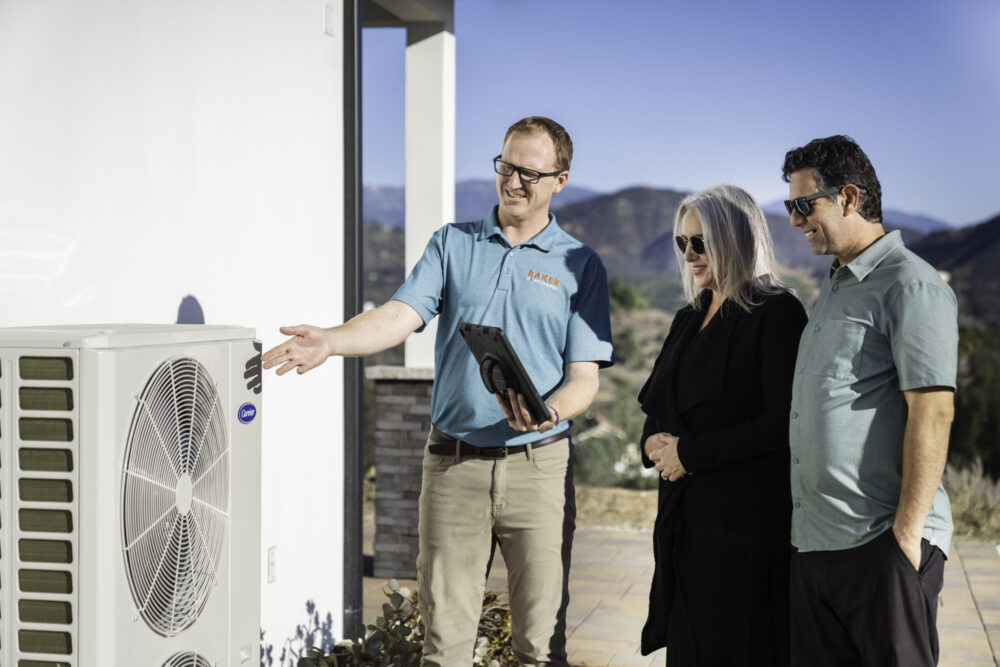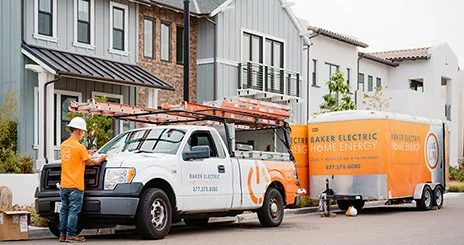
What is the Self-Generation Incentive Program (SGIP)?
The Self-Generation Incentive Program (SGIP) is a California state incentive that provides significant rebates to encourage Californians to add or combine Energy Storage to their solar systems.
How much is the SGIP Rebate and am I eligible?
The SGIP incentives can be very rich, but the qualifications can be confusing.
We’ll breakdown each of the SGIP rebates below, but when you’re ready, reach out to us directly for help determining which SGIP program you might qualify for, and the associated rate/rebate you could expect.
What SGIP Rebates are available?
There are three different types of SGIP Programs that may provide a rebate for a residential energy storage program:
1. General Market SGIP
Currently available to: All California residents who install an eligible energy storage system and agree to comply with the guidelines set forth by the program once installed. Please note: availability of the rebate can change, and Baker will only apply for the rebate on your behalf if the rebate is currently active when contract is signed.
How it works: This is a tiered rebate with different incentive amounts available at each tier. Overtime, the incentive decreases as the tiers increase.
Different utilities operate at different tiers, depending on the budget given by the state and how much of this budget remains.
The budget for each tier launches in steps, and that tier only stays open until the budget is depleted. At that stage, applications go on hold until (and if) the next tier opens.
Your rebate amount also depends on the size/capacity of the energy storage equipment installed.
Call us for more information on the current tier and remaining budget that corresponds to your address.
2. SGIP resiliency
Currently available to:
- California residents who install an eligible energy storage system and agree to comply with the guidelines set forth by the program once installed;
- AND have experienced two or more utility Public Safety Power Shut offs (PSPS); OR Live in a Tier 2 or 3 High Fire Threat District (HFTD);
AND meet one of the following additional criteria:
- Live in multifamily deed-restricted housing or a single-family home subject to resale restrictions;
- OR are currently enrolled in a utility Medical Baseline Program;
- OR have notified utility of personal serious illness and/or life-threatening condition;
- OR have received or reserved other solar-related incentives (including SASH, DAC-SASH, MASH, or SOMAH programs);
- OR live in a home that relies on electric pump wells for water. This pathway is also subject to income requirements.
How it works: The budget for each utility service area is set, and the incentive is only available until the budget is depleted. At that stage, applications go on hold until (and if) additional funds are added to the budget.
Your rebate amount also depends on the size/capacity of the energy storage equipment installed.
Call us for more information on the current tier and remaining budget that corresponds to your address.
Please Note: Availability of the rebate can change, and Baker will only apply for the rebate if it is currently active when your contract is signed.
3. SGIP equity resiliency
Currently available to:
- California residents who install an eligible energy storage system and agree to comply with the guidelines set forth by the program once installed;
- AND meet one of the following additional criteria:
- Live in a single-family home that is subject to resale restrictions;
- OR live in a single-family home and have already participated in or have reserved incentives in the Disadvantaged Communities–Single-Family Solar Homes Program (DAC-SASH);
- OR live in an apartment that is considered low-income housing and includes at least five rental units and is in a Disadvantaged Community (DAC)* or at least 80 percent of the apartment building residents have incomes at or below 60 percent Area Median Income.
- OR live anywhere in California Indian Country.
How it works: The budget for each utility service area is set, and the incentive is only available until the budget is depleted. At that stage, applications go on hold until (and if) additional funds are added to the budget.
Your rebate amount also depends on the size/capacity of the energy storage equipment installed.
Call us for more information on the current tier and remaining budget that corresponds to your address.
Please Note: Availability of the rebate can change, and Baker will only apply for the rebate if is currently active when your contract is signed.
Who receives the SGIP rebate, and when?
The SGIP rebates are a direct-to-consumer rebate. We install the energy storage system under our standard Home Improvement Agreement and payment from the homeowner is made directly to the contractor (for a cash agreement) or to the finance company (for a financed system).
The program administrator then pays the SGIP applicant directly. The schedules for these payments can vary and are dependent on the state and the program administrator.
Contact us and we can help you gauge expectations based on average payment times we’ve seen on recent projects.
How do I claim the SGIP rebate?
If all of this feels overwhelming, we’ve got good news! Our team is here to help. We’ll file your application on your behalf and the payment will come directly to you.
When you work with us, the whole process will be a joint effort. Depending on the project, the application can be detailed, so while we’ll take the lead, we’ll also work very closely with you for the right information throughout.


